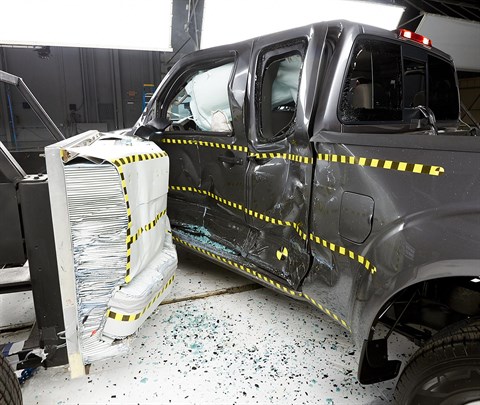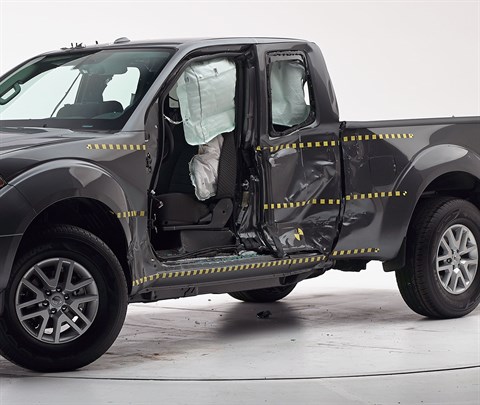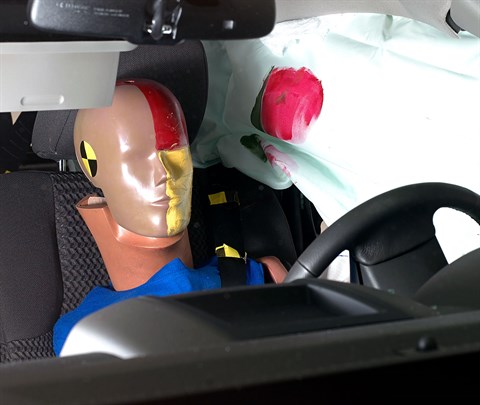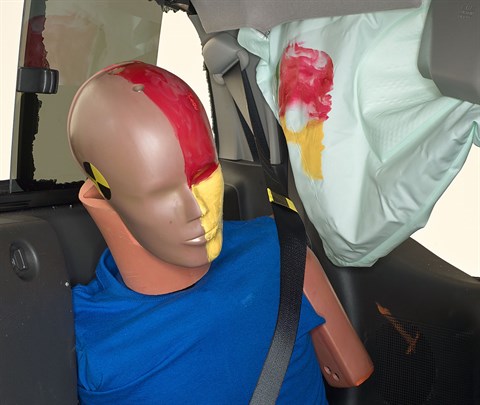Moderate overlap front: original test
Rating applies to 2013-21 models
Tested vehicle: 2013 Nissan Frontier SV King Cab 4wd
The Nissan Frontier Crew Cab and King Cab were redesigned for the 2005 model year. Beginning with 2013 models, design changes were made to the frontal airbags and seat belts.
Moderate overlap frontal ratings are assigned by the Institute based on a test conducted by Nissan. (The vehicle tested by Nissan was designated as a 2012 model but included the airbag and seat belt changes of the 2013 models.) Because the vehicle structure did not change after 2005, structure ratings are based this test as well as two earlier tests of the Frontier, one a 2005 model and the other a 2008 model.
The moderate overlap frontal ratings apply to both the Crew Cab and King Cab models.
| Evaluation criteria | Rating |
|---|---|
| Overall evaluation | |
| Structure and safety cage | |
| Driver injury measures | |
| Head/neck | |
| Chest | |
| Leg/foot, left | |
| Leg/foot, right | |
| Driver restraints and dummy kinematics | |
Side: original test
Rating applies to 2015-21 models
Tested vehicle: 2017 Nissan Frontier SV King Cab
The Nissan Frontier King Cab was redesigned for the 2005 model year. Beginning with 2012 models, design changes were made to the side curtain airbags to improve occupant protection in side impact crashes. Beginning with 2015 models, design changes were made to the side torso airbags and front door trim panels to further improve protection for front seat occupants.
| Evaluation criteria | Rating |
|---|---|
| Overall evaluation | |
| Structure and safety cage | |
| Driver injury measures | |
| Head/neck | |
| Torso | |
| Pelvis/leg | |
| Driver head protection | |
| Rear passenger injury measures | |
| Head/neck | |
| Torso | |
| Pelvis/leg | |
| Rear passenger head protection | |

View of the vehicle and barrier just after the crash test.

View of the vehicle after the crash with the front door removed, showing the side airbags and damage to the occupant compartment.

Smeared greasepaint shows where the driver dummy's head was protected from being hit by hard structures by the side curtain airbag. (The head was also contacted by the side torso airbag.)

Smeared greasepaint shows where the rear passenger dummy’s head was protected by the side airbag.
Head restraints & seats
Seat type: Manual cloth seats AHR
| Overall evaluation | |
|---|---|
| Dynamic rating | |
| Seat/head restraint geometry |
About the head restraint & seat test
Currently, IIHS tests apply only to front seats.